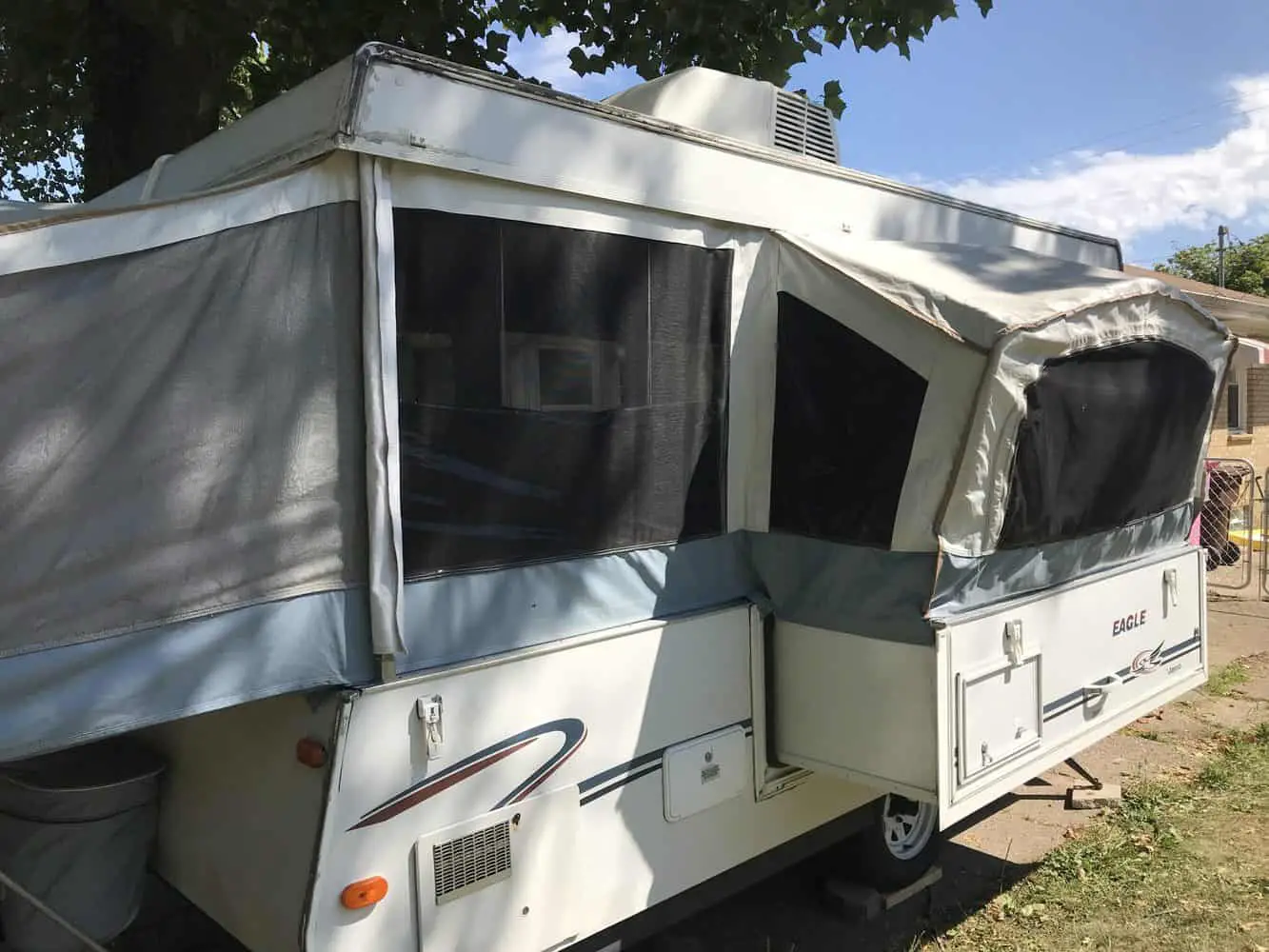When looking to purchase a used pop up camper there are things you need to pay attention to such as flooring, canvas, roof, water heater, furnace, screen, cushions, refrigerator, air conditioner, and awning so you don’t end up regretting the purchase.
My wife and I have purchased 3 pop up campers over the years and through those experiences we have learned so much about what to look for and deal-breakers that made us walk away from the purchase.
Here Are 10 Things To Pay Attention To When Buying A Pop Up Camper.
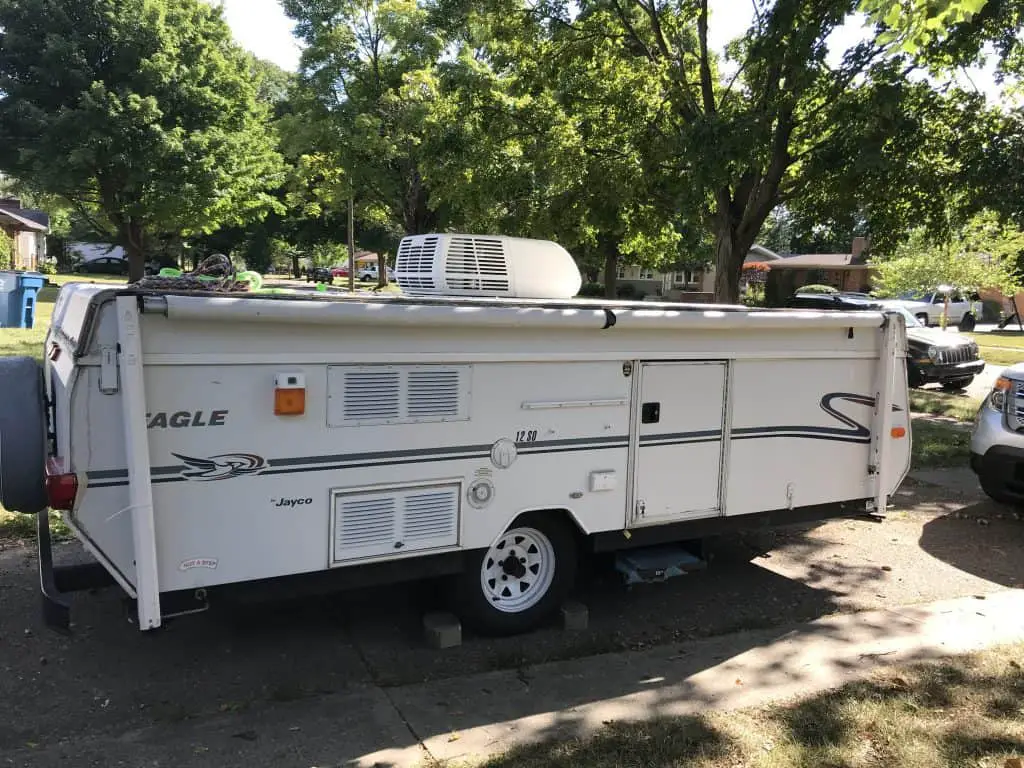
1. Flooring
If a used pop up camper is older and has been stored outside, there may be some moisture that has gotten into the flooring. If too much moisture has been seeping into the floors this can cause the wood flooring to get soft.
Walk around in the pop up and pay attention to how the floor feels. Does it feel rigid and firm? Or do you find it flexing in spots and feel soft?
The last thing you need is to have to worry about having to replace flooring in your newly purchased camper so make sure the flooring feels nice and solid.
2. Canvas
The condition of the canvas will tell you a lot about how the camper was cared for. If you notice a lot of black mold stains, mildew, or other major discoloration, this means there has been water in the camper at some point. It may have had a leak that was repaired or it was packed up in the rain and never properly aired out to prevent staining.
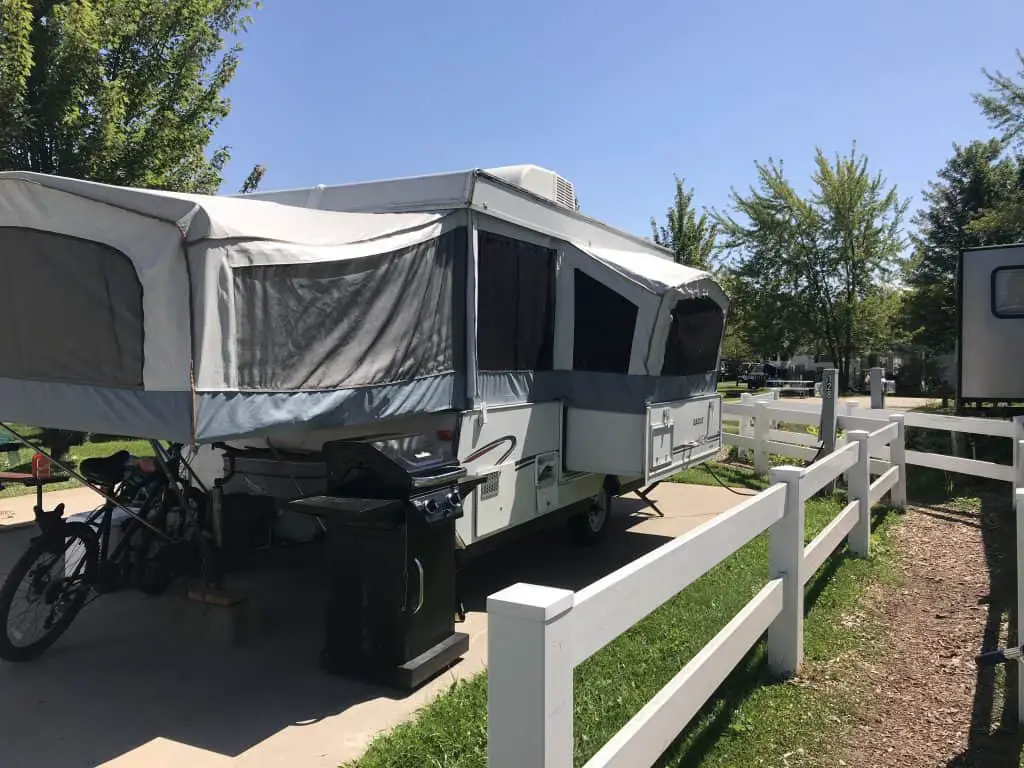
Also, look for any rips and tears that may be in the canvas. When beds are moved in and out, this is the time for the canvas to get caught and create rips in certain areas. Or they have had a mouse problem when it was being stored that could have left holes.
Inspect the canvas and make sure you don’t see any major holes or rips…the keyword being major! Remember you’re purchasing a used camper and they all have their own quirks and flaws, but you want to ensure there are no major issues that you will have to repair.
3. Roof
This is an area that might be hard to inspect when the pop up camper is set up, but you can start by inspecting the pop up campers roof from the inside.
Look at the lights and screws or any other metal hardware for signs of rust or water stains in the light covers. This will tell you if water has been getting in, even if it’s been a small amount over time.
Also search the ceiling for soft spots and trim pieces that might be delaminated due to moisture.
I would have the sellers lower the camper (I know its a pain) but you want to inspect the roof from the outside and look for any patch jobs or a bunch of silicone (never use silicone!)
If you see caulk, that’s fine, but silicone should never be used because nothing will stick to it, so you will not be able to add caulk to it if the silicone needs to be added too.
Also, silicone wont last very long and will peel and crack much faster than caulk.
This is an example of flextape being used on the center seam of a roof on a Jayco. That is usually fine if you find yourself with a leak while camping, but you will want to do a more permanent fix when you have the time.
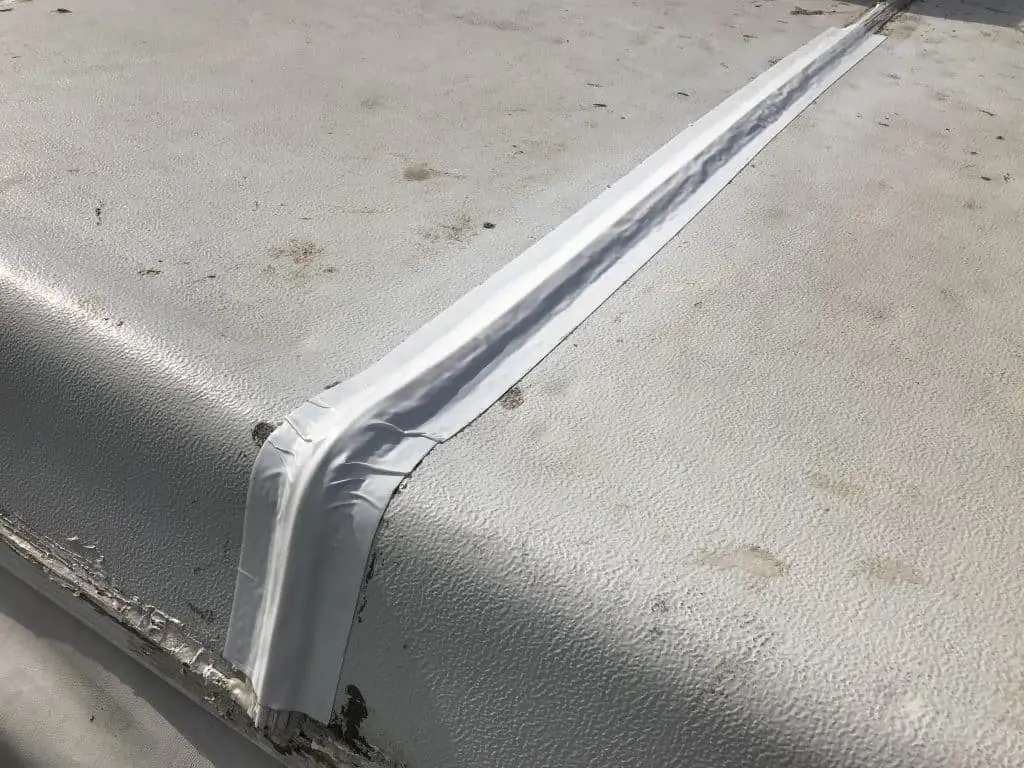
For a permanent fix, you want to get some RV tape that will be a long-lasting solution to a leak at the top of a pop-up camper such as this Quick Roof Extreme with Steel-Loc Adhesive which works extremely well.
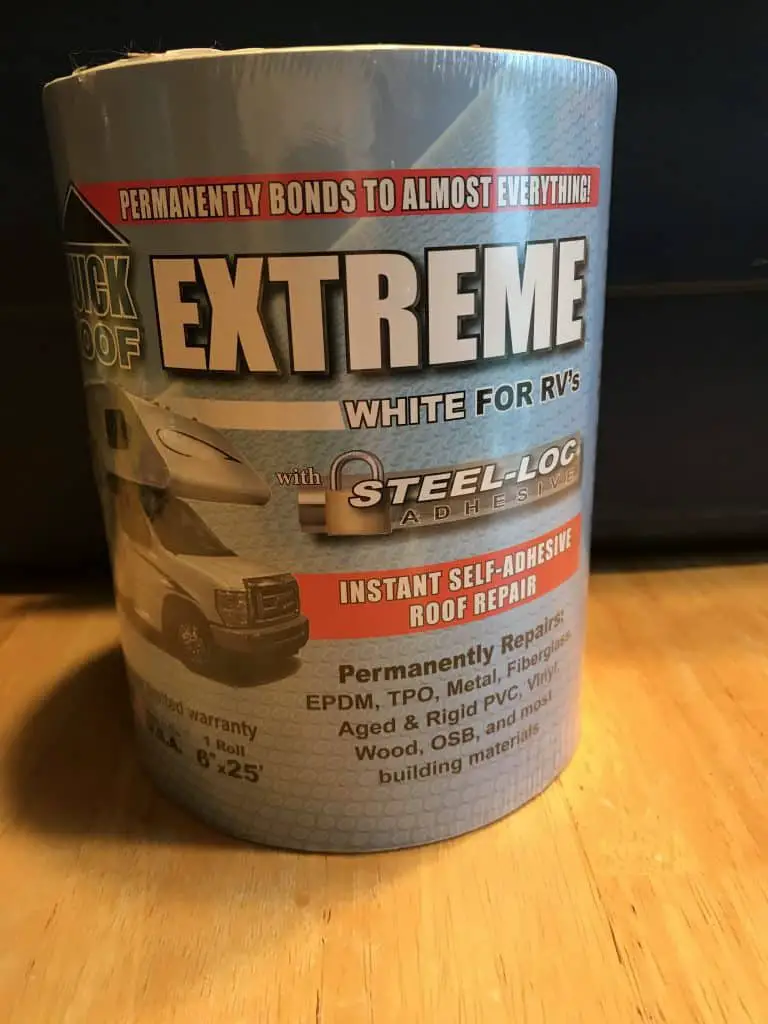
Tip: This stuff will make a bond that is extremely strong, so make sure you place it where you want it the first time. Also, if you heat it up with a heat gun or hairdryer, it will make it easier to apply with a good seel.
4. Screen
The windows will have screen material behind the canvas and should be inspected for holes. The screen can be patched pretty easily but you don’t want to have a camper with a bunch of patches on the screens so just check it out and make sure you don’t have holes you will need to worry about.
(We had mice get into our pop up camper over a winter and named our pop up Patches because of this.)
5. Cushions
I would look at the cushions for signs of musty smells or stains that might have occurred such as spilled drinks or perhaps small children who may have wet the bed.
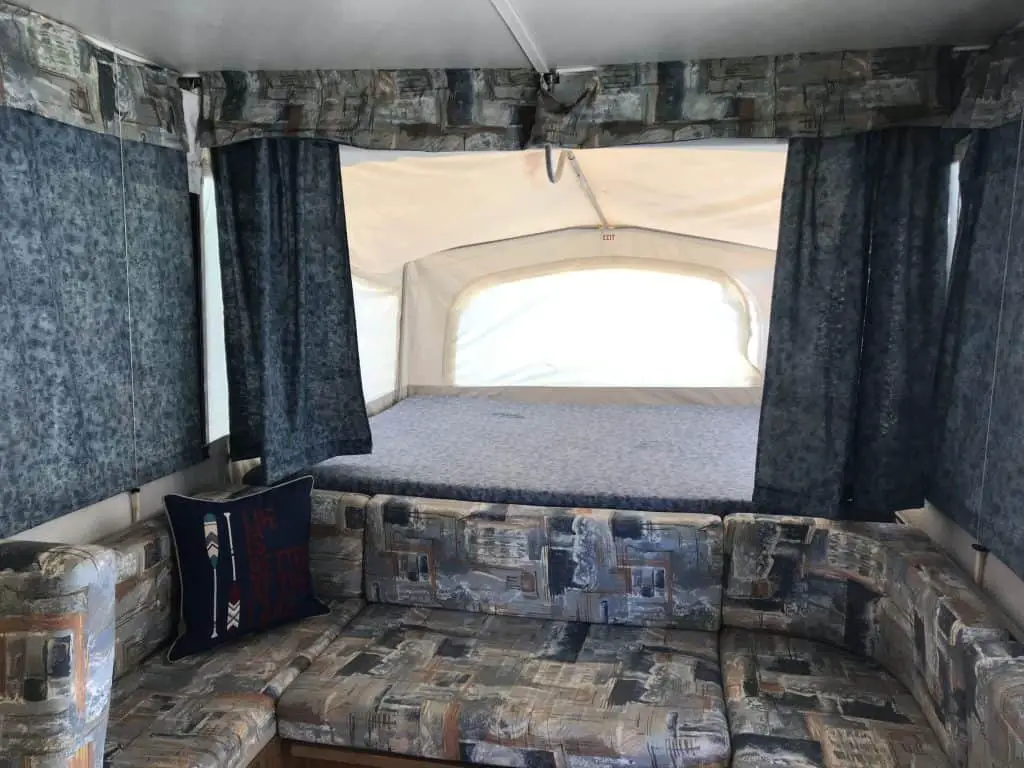
The bed cushions usually will have a zip cover that can be taken off and washed but just make sure they aren’t too stained or soiled.
6. Hot Water Heater
Ask the sellers if the hot water heater works and if you can turn on the propane and make sure the pilot lights with no issues. When doing your dishes, you are going to want hot water so make sure it works as it should.
7. Furnace
Check out the furnace and make sure you know where the on/off switch is on the thermostat.
Depending on where you live and what time of year you will be camping, having heat in your pop up will be a lifesaver when it comes to chilly nights, especially when camping with small children.
8. Refrigerator
Not all pop up campers come with a fridge as many will only have an icebox in place of the fridge. But, if the one you’re looking at comes with one you should ask if it works and how to operate it.
You should have a panel on the outside that controls the fridge that gives you an indication if it works or not.
9. Air Conditioner
Like the fridge, not all pop up campers will come equipped with an air conditioner. If it doesn’t, then you don’t have to worry about this. But, if it does have one then I would turn it on and see if it’s blowing air. It will take some time to actually start pushing out cold air but it’s up to you to see how long you want to sit there and wait.
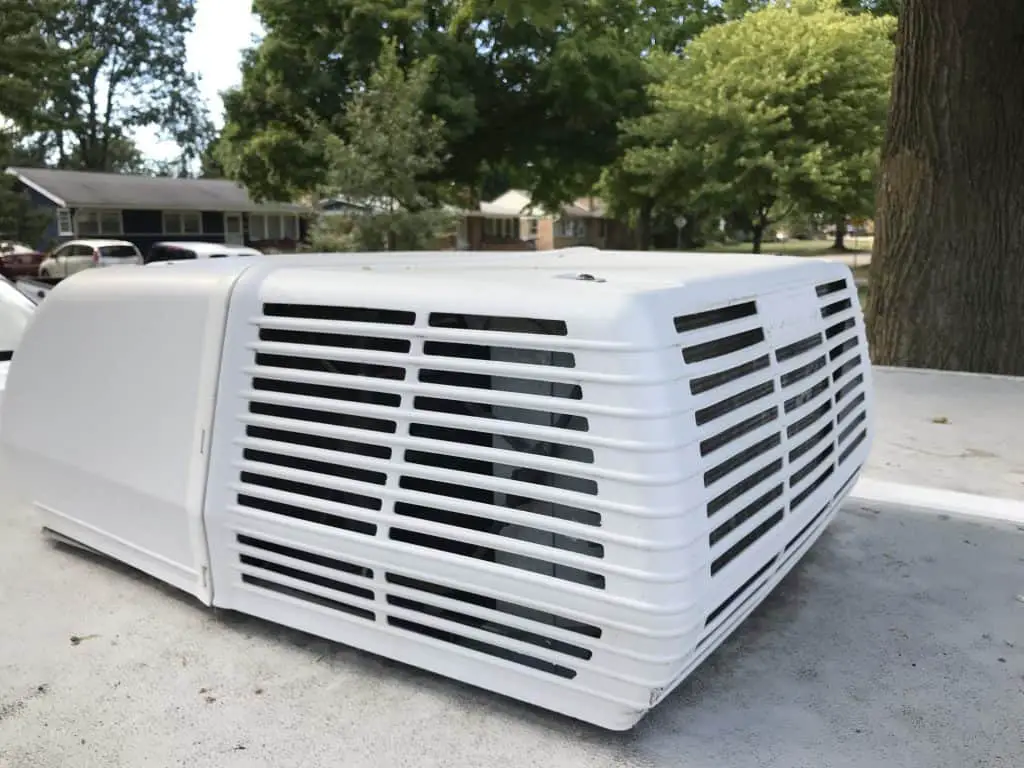
Another thing to check when having an air conditioner is the gasket. The air conditioning unit sits on a gasket that over time can get cracked and brittle on older used pop up campers which can cause a pathway for the expelled water from the air conditioner unit and could potentially drip water inside the camper.
10. Awning
There are a couple of different awnings you will find on these types of campers. Some will be more like a traditional awning that will mount to the side of the camper with arms while others will be in a bag attached to the camper that usually will consist of poles that will act as the structure of the awning.

You want to make sure all the poles are present or that the more traditional awning will extend and retract as it should.
Conclusion
You want to check all these things to make sure you are aware of what you are looking at and that you are making a purchase for your new home away from home.
I hope this guide was helpful and hope you find a great pop up for your new adventures.
Good luck, and happy camping!
Checkout our article on: How Much Do Pop Up Campers Weigh?

